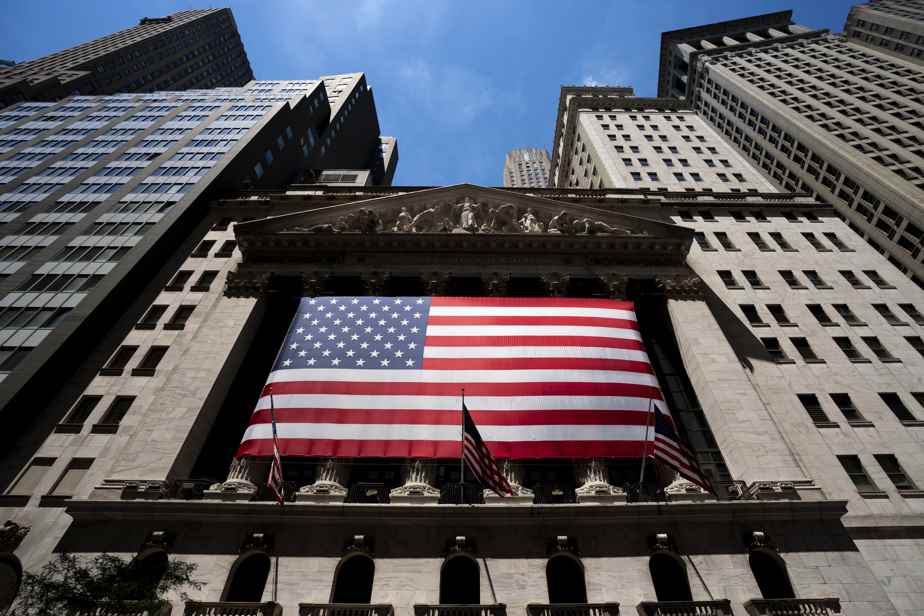(New York) The New York Stock Exchange was up slightly on Friday, after concluding its worst first half since 1970 on Thursday, at the start of a session that promises to be calm before a three-day weekend in the United States. United.
Posted at 9:53 a.m.
Around 10:10 a.m., the Dow Jones gained 0.39%, the NASDAQ index gained 0.53%, and the broader S&P 500 index, 0.46%.
Thursday, Wall Street had concluded a black semester, which saw the S&P 500 unscrew by 20% and the NASDAQ by 29.5%.
“I’m not expecting much today,” said Peter Cardillo of Spartan Capital Securities. “I suspect that with the long bank holiday weekend [fête nationale], volumes will be low. »
The New York market will follow a few macroeconomic indicators on Friday, mainly the ISM manufacturing activity index for June and construction spending in May.
“Unfortunately, the appearances and the feeling are the same” as in the first half “for this beginning of the second half of the year”, commented, in a note Patrick O’Hare, of Briefing.com.
“There are still latent concerns about growth, corporate earnings, inflation, and central bank rate hikes,” added the analyst.
In addition to the further decline in equities, this anxiety was reflected in the bond market.
In three days, the yield on 10-year US government bonds fell by nearly 40 basis points (0.4 percentage points), a very violent movement on the scale of this market.
On Friday, it stood at 2.81%, its lowest level in a month.
The growth indicator of the Atlanta branch of the Federal Reserve (Fed), which publishes a forecast of GDP updated in real time, now expects a contraction of 1% at an annual rate in the second quarter.
If this drop were confirmed, it would officially put the United States into recession, after an initial decline in the first quarter.
The New York place was also scalded by an “accumulation effect” of bad news in the semiconductor sector, according to Patrick O’Hare.
The manufacturer of microprocessors Micron skidded (-4.59% to 52.74 dollars), the day after the publication of forecasts much lower than analysts’ expectations for the fourth quarter of its staggered fiscal year (from June to August).
“Recently, demand has weakened in the industry, so we are making sure to reduce the growth of our supply,” commented Managing Director Sanjay Mehrotra.
In addition, according to the specialized daily DigiTimes, AMD, a competitor of Micron, as well as the specialist in graphics cards Nvidia would seek to reduce their orders with the giant Taiwanese subcontractor TSMC, due to a slowdown in demand for telephones. smarts and computers.
These developments dragged down the entire sector, from Qualcomm (-3.03%) to Broadcom (-2.08%), via Intel (-2.70%).
Same music at Meta (ex-Facebook, -2.43% to 157.33 dollars), which would have reduced its forecasts for hiring engineers by 30%, according to an internal document obtained by the Reuters agency, in which the CEO Mark Zuckerberg expects “one of the worst turnarounds (in economic conditions) we’ve seen in recent history.”
The American automaker General Motors resisted (+0.57% to 31.94 dollars) after reporting a 15% decline in sales in the second quarter, but confirmed its forecasts for 2022.
The department store chain Kohl’s unscrewed (-20.71% to 28.31 dollars), after the breakdown of its negotiations with Franchise Group for a takeover. The board of directors considered that “given the environment and the volatility of the market”, it was “not prudent to continue to work on a transaction”.
The group of casinos and hotels Caesars Entertainment (+0.81% to 38.61 dollars) benefited from an agreement with a major union representing the employees of the establishments of Atlantic City (New Jersey), which threatened a strike fault increases in their salary conditions.
After another difficult week, Peter Cardillo does not rule out a rebound, which will largely depend on the two macroeconomic milestones of the week, namely the publication of the minutes of the last Fed meeting on Wednesday and the report monthly on employment, Friday.
NASDAQ
